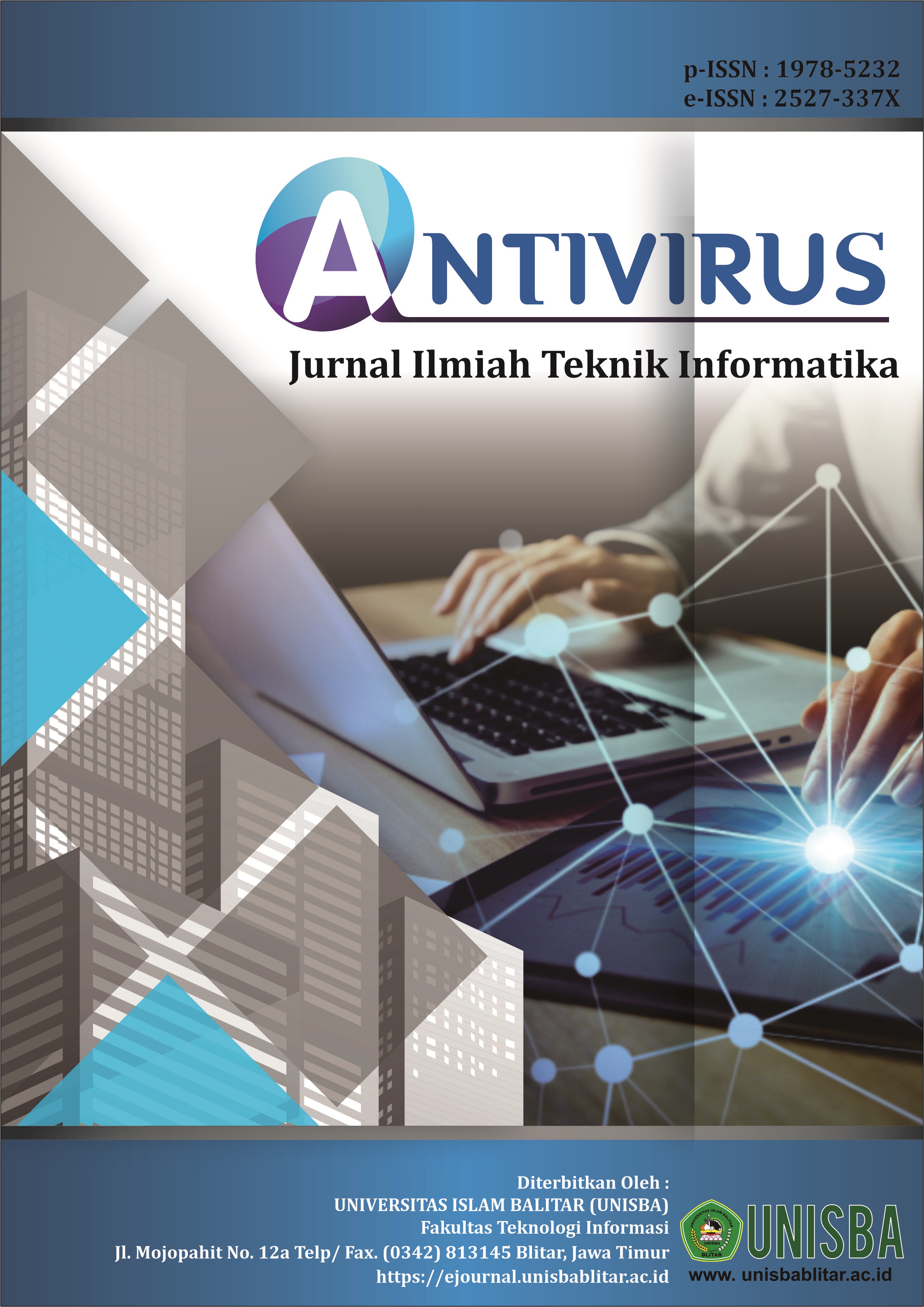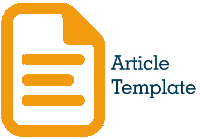ENVIRONMENTAL SENSING AS IOT-BASED TEMPERATURE, HUMIDITY, AND GAS INFORMATION USING ESP 32
DOI:
https://doi.org/10.35457/antivirus.v18i2.3973Keywords:
WSN, ESP32, MQ2, DHT22, IoTAbstract
Current weather conditions in technological developments and climate change are a challenge to create safe and suitable conditions for carrying out activities both outdoors and indoors. The impact of climate change is that the research aims to create a monitoring and awareness system in work environment conditions and teaching and learning activities at the tertiary level. Objective: By utilizing technology that is currently mushrooming, such as IoT, to increase awareness of the importance of temperature, humidity and air quality in a room for teaching and learning activities and other activities in order to create a healthier work environment. Method: The method used is a wireless sensor network where sensors will read physical changes that occur such as methane and LPG gas anomalies, as well as changes in extreme temperature and humidity. Then the data that has been read is sent via ESP32 with an internet network connection to Blynk Cloud as universal monitoring between users and a personal dashboard which is used as a server to track history. Results: the results obtained with a sampling data collection period of approximately one hour, the condition of the room used for testing the DHT 22 sensor, and MQ2 indicated that there was no methane gas, or LPG contained in the room, indicated by ppm <300, as well as changes in temperature which were relatively stagnant did not occur in extreme changes where the average temperature obtained was 26.5˚C. The results from the humidity sensor showed that the room humidity was an average of 77.8%. These results can be interpreted as meaning that the room is still in a safe and comfortable condition for carrying out activities.
Downloads
References
[2] P. Megantoro, S. A. Aldhama, G. S. Prihandana, and P. Vigneshwaran, “IoT-based weather station with air quality measurement using ESP32 for environmental aerial condition study,” Telkomnika (Telecommunication Comput. Electron. Control., vol. 19, no. 4, pp. 1316–1325, 2021, doi: 10.12928/TELKOMNIKA.v19i4.18990.
[3] S. Mahetaliya, D. Makwana, A. Pujara, and S. Hanumante, “IoT based Air Quality Index Monitoring using ESP32,” Int. Res. J. Eng. Technol., vol. 08, no. 04, pp. 5186–5192, 2021, [Online]. Available: www.irjet.net
[4] V. Barral Vales, O. C. Fernandez, T. Dominguez-Bolano, C. J. Escudero, and J. A. Garcia-Naya, “Fine Time Measurement for the Internet of Things: A Practical Approach Using ESP32,” IEEE Internet Things J., vol. 9, no. 19, pp. 18305–18318, 2022, doi: 10.1109/JIOT.2022.3158701.
[5] A. Nur Alfan and V. Ramadhan, “Prototype Detektor Gas Dan Monitoring Suhu Berbasis Arduino Uno,” PROSISKO J. Pengemb. Ris. dan Obs. Sist. Komput., vol. 9, no. 2, pp. 61–69, 2022, doi: 10.30656/prosisko.v9i2.5380.
[6] D. Hercog, T. Lerher, M. Truntič, and O. Težak, “Design and Implementation of ESP32-Based IoT Devices,” Sensors, vol. 23, no. 15, 2023, doi: 10.3390/s23156739.
[7] M. I. Andriansyah and J. Jamaaluddin, “Design an Internet of Things-based Rat Trap and ESP32 Camera [ Rancang Bangun Jebakan Tikus Berbasis Internet of Things dan Camera ESP32 ],” pp. 1–11.
[8] G. Forbes, “Employing multi-modal sensors for personalised smart home health monitoring,” CEUR Workshop Proc., vol. 2567, pp. 185–190, 2019.
[9] D. Kandris, C. Nakas, D. Vomvas, and G. Koulouras, “Applications of wireless sensor networks: An up-to-date survey,” Appl. Syst. Innov., vol. 3, no. 1, pp. 1–24, 2020, doi: 10.3390/asi3010014.
[10] R. Ahmad, R. Wazirali, and T. Abu-Ain, “Machine Learning for Wireless Sensor Networks Security: An Overview of Challenges and Issues,” Sensors, vol. 22, no. 13, 2022, doi: 10.3390/s22134730.
[11] R. Ahmad, R. Wazirali, T. Abu-Ain, and T. A. Almohamad, “Adaptive Trust-Based Framework for Securing and Reducing Cost in Low-Cost 6LoWPAN Wireless Sensor Networks,” Appl. Sci., vol. 12, no. 17, 2022, doi: 10.3390/app12178605.
[12] N. R. Patel and S. Kumar, “Wireless sensor networks’ challenges and future prospects,” Proc. 2018 Int. Conf. Syst. Model. Adv. Res. Trends, SMART 2018, pp. 60–65, 2018, doi: 10.1109/SYSMART.2018.8746937.
[13] D. Darso, A. Putri Tanzilla, and R. Setiawan, “Pelatihan ESP8266 bagi siswa SMK N Kutasari Purbalingga untuk Pembelajaran Internet of Think (IOT).,” ABDINE J. Pengabdi. Masy., vol. 3, no. 2, pp. 179–184, 2023, doi: 10.52072/abdine.v3i2.645.
[14] A. Noor, “Aplikasi Pendeteksi Kualitas Air Menggunakan Turbidity Sensor Dan Arduino Berbasis Web Mobile,” Joutica, vol. 5, no. 1, p. 316, 2020, doi: 10.30736/jti.v5i1.329.
[15] A. Maier, A. Sharp, and V. Yuriy, “Comparative Analysis and Practical Implementation of the ESP32 Microcontroller Module for the Internet of Things,” 2017 Internet Technol. Appl., pp. 143–148, 2014.
[16] M. Babiuch, P. Foltynek, and P. Smutny, “Using the ESP32 microcontroller for data processing,” Proc. 2019 20th Int. Carpathian Control Conf. ICCC 2019, pp. 1–6, 2019, doi: 10.1109/CarpathianCC.2019.8765944.
[17] F. Puspasari, T. P. Satya, U. Y. Oktiawati, I. Fahrurrozi, and H. Prisyanti, “Analisis Akurasi Sistem sensor DHT22 berbasis Arduino terhadap Thermohygrometer Standar,” J. Fis. dan Apl., vol. 16, no. 1, p. 40, 2020, doi: 10.12962/j24604682.v16i1.5776.
[18] Y. Zhou, Q. Zhou, Q. Kong, and W. Cai, “Wireless temperature & humidity monitor and control system,” 2012 2nd Int. Conf. Consum. Electron. Commun. Networks, CECNet 2012 - Proc., pp. 2246–2250, 2012, doi: 10.1109/CECNet.2012.6201725.
[19] D. Srivastava, A. Kesarwani, and S. Dubey, “Measurement of Temperature and Humidity by using Arduino Tool and DHT11,” Int. Res. J. Eng. Technol., vol. 05, no. 12, pp. 876–878, 2018, [Online]. Available: www.irjet.net
[20] M. K. Anushree and R. Krishna, “A smart farming system using Arduino based technology,” Int. J. Adv. Res., vol. 4, no. 4, pp. 850–856, 2018, [Online]. Available: www.IJARIIT.com
[21] Y. A. Kurnia Utama, “Perbandingan Kualitas Antar Sensor Suhu dengan Menggunakan Arduino Pro Mini,” e-NARODROID, vol. 2, no. 2, 2016, doi: 10.31090/narodroid.v2i2.210.
[22] R. Fajar Nugraha, F. Nurul Husna, S. Sandi, A. Fairuz Syahla, Y. Aldi Saputra, and R. Hidayat, “Smart Air Quality Guardian: Pengawasan Polusi Udara Berbasis ESP32 dengan Sensor Gas MQ-2 dan MQ-135,” J. Komput. dan Elektro Sains, vol. 2, no. 2, pp. 1–7, 2024, doi: 10.58291/komets.v2i2.175.
Downloads
Published
Issue
Section
License
Authors who publish with this journal agree to the following terms:
- Copyright on any article is retained by the author(s).
- Author grant the journal, right of first publication with the work simultaneously licensed under a Creative Commons Attribution License that allows others to share the work with an acknowledgement of the work’s authorship and initial publication in this journal.
- Authors are able to enter into separate, additional contractual arrangements for the non-exclusive distribution of the journal’s published version of the work (e.g., post it to an institutional repository or publish it in a book), with an acknowledgement of its initial publication in this journal.
- Authors are permitted and encouraged to post their work online (e.g., in institutional repositories or on their website) prior to and during the submission process, as it can lead to productive exchanges, as well as earlier and greater citation of published work.
- The article and any associated published material is distributed under the Creative Commons Attribution-ShareAlike 4.0 International License











